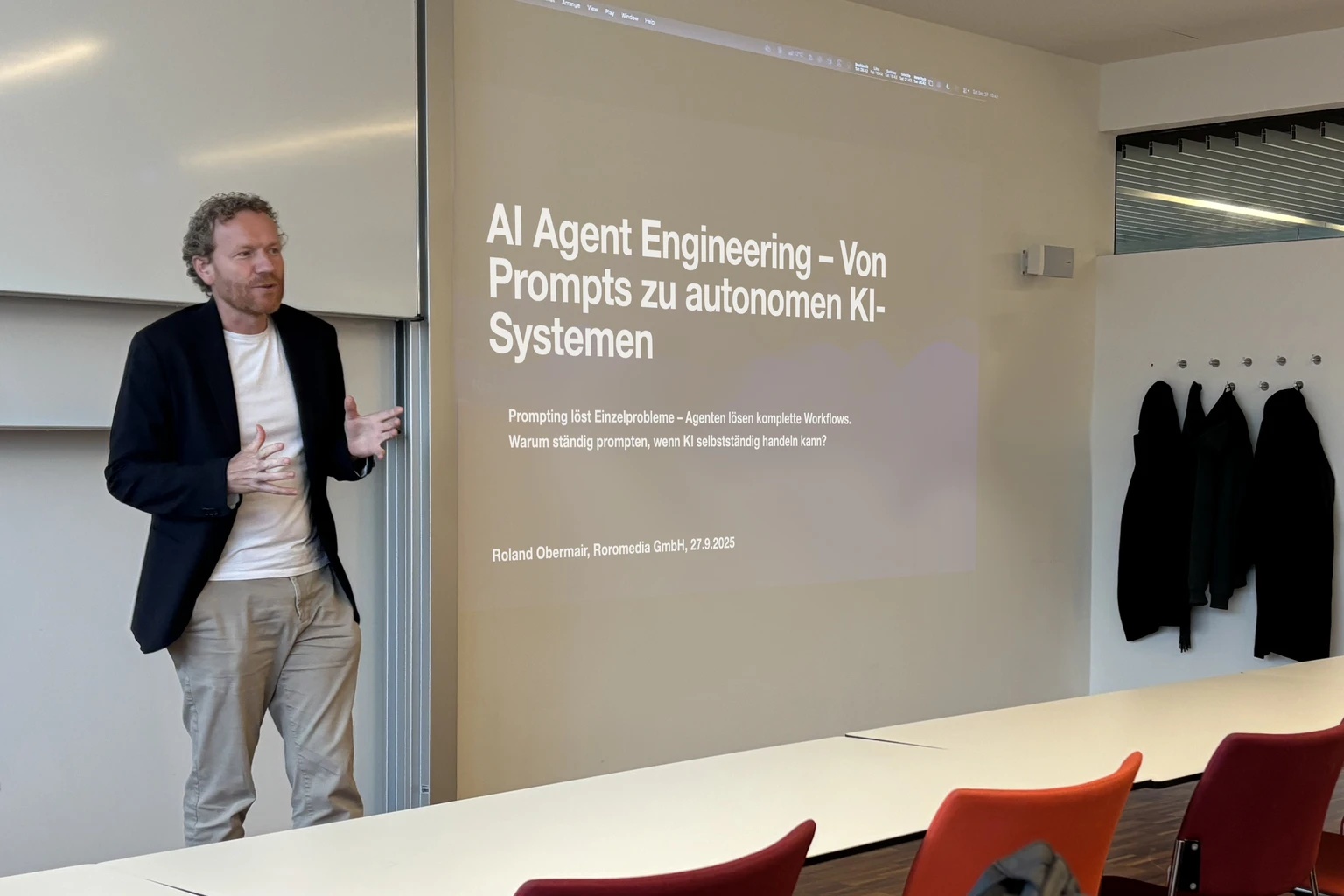
AI Engineering lecture at the University of Applied Sciences Salzburg: From Theory to Practical Agentic AI
This Saturday, Mag. Christoph Haudek, senior lecturer in the Master’s program Sales Management, invited me to give a lecture on AI Engineering to his students at the University of Applied Sciences Salzburg (FH Salzburg).
The course aimed to move beyond simple prompting and introduce students to the real-world challenges of building AI systems - systems that don’t just respond to prompts but act autonomously, integrate with tools, and operate safely at scale.
Why AI Engineering – Not Just AI Basics
Traditional AI courses often focus on theory: models, algorithms, and evaluation.
But today’s companies face very different questions:
- How do we connect multiple AI components into one system?
- How do we standardize tool integrations for CRM, ERP, SaaS, or internal APIs?
- How do we secure these systems, prevent prompt injection, and ensure compliance?
- How can we create autonomous, long-running workflows that don’t need constant human prompting?
The answer lies in Agentic AI, multi-agent orchestration, and open standards like MCP (Model Context Protocol).
Our course focused on this paradigm shift - from using models to engineering full AI ecosystems.
Key Topics Covered
Agent Architecture & Roles: Designing modular agents like Researchers, Analysts, Implementers
- The HiveMind Concept: How a central orchestrator coordinates teams of agents
- MCP (Model Context Protocol): Why companies should build tool ecosystems instead of bot silos
- Security & Governance: Protecting against prompt injection, data exfiltration, and unauthorized tool use
- Hands-On Projects: Students could witness live agent-based workflows with real-world integrations
Practical Demo Highlights
To make the concepts tangible, I prepared live demos that showed what Agentic AI can already achieve today:
1. Voice Chatbot for Buying Eggs
Based on a real-world business of a student we created a live voice-based chatbot capable of negotiating egg purchases in a natural conversation:
- Identify if the customer is a consumer or business.
- Offer different package sizes and volumes dynamically.
- Provide guidance on egg qualities (e.g., organic vs. conventional).
- Conduct a real negotiation, handling counter-offers naturally.
This demo demonstrated how agents + voice interfaces can create seamless, autonomous shopping experiences.
2. Email Sales Bot with Human-in-the-Loop
I also showcased an email sales assistant that:
- Managed incoming customer inquiries automatically.
- Suggested drafts for responses with human review before sending.
- Integrated with internal product data through standardized tooling.
This showcased how companies can automate repetitive sales tasks while keeping humans in the decision loop.
3. WhatsApp Bot
Finally, I demonstrated a WhatsApp-based conversational agent that:
- Answered customer questions directly in messaging apps.
- Could be attached to an autonomous Agent who feeds in information to the different chats
- Used the same underlying architecture — showing that one agent ecosystem can power many interfaces.
A Glimpse into the Future of Agentic Systems
As a final highlight, I tried to show a glimpse into the future of what next-generation agentic systems will look like.
We discussed emerging architectures like the HiveMind concept, where:
- Multiple specialized agents are orchestrated seamlessly by a central intelligence.
- Tasks are automatically decomposed, delegated, and validated.
- Memory, security, and tool access are handled by modular subsystems.
These capabilities point to a future where companies no longer think in bots or single models, but in tool ecosystems and agent networks that can adapt and evolve — no matter what interface or LLM sits on top.
Challenges & Lessons Learned
Complexity vs. Simplicity: Students must first master modular design before scaling to orchestration.
- Tool-Centric Thinking: The real differentiator is the tools and APIs, not just the language models.
- Security from Day One: Prompt injection and data leaks are real risks and must be addressed early.
- Multi-Interface Strategy: Voice, chat, email, and SaaS systems should all plug into the same standardized backend.
Why It Matters
For Students:
- They move forward with the knowledge to design and deploy real AI systems, giving them a strong edge in their fields.
For Companies:
- Competitive advantage no longer comes from having the “best model,” but from building scalable, secure, and flexible agent ecosystems that can plug into any model or interface.
My mission remains clear: to train a new generation of AI engineers who don’t just use AI, but build the adaptive, autonomous systems of tomorrow.
The students were so involved - we had many discussions and questions throughout the session, and their curiosity sparked exciting ideas about what could be possible. Even during the break, we kept exchanging use cases and ideas, showing how deeply the topic resonated with them.
Additional Blog Posts
A View At The New EU NIS2 Directive: What It Means For Your Business
The European Union’s NIS2 directive is here. And it’s a game-changer.
If you’re running a business in the EU or working with European partners, cybersecurity just became a lot more serious.

